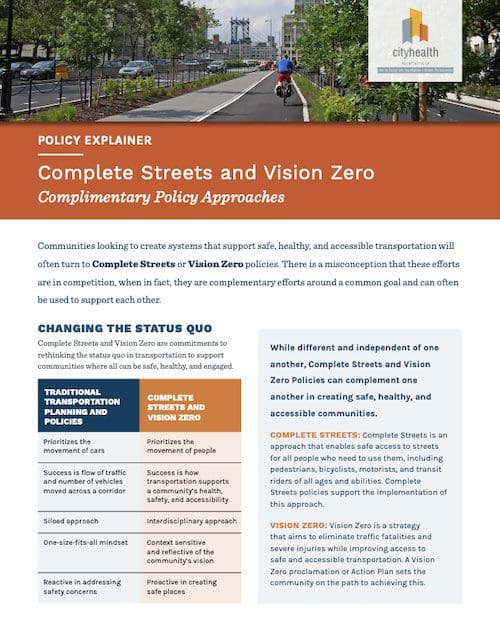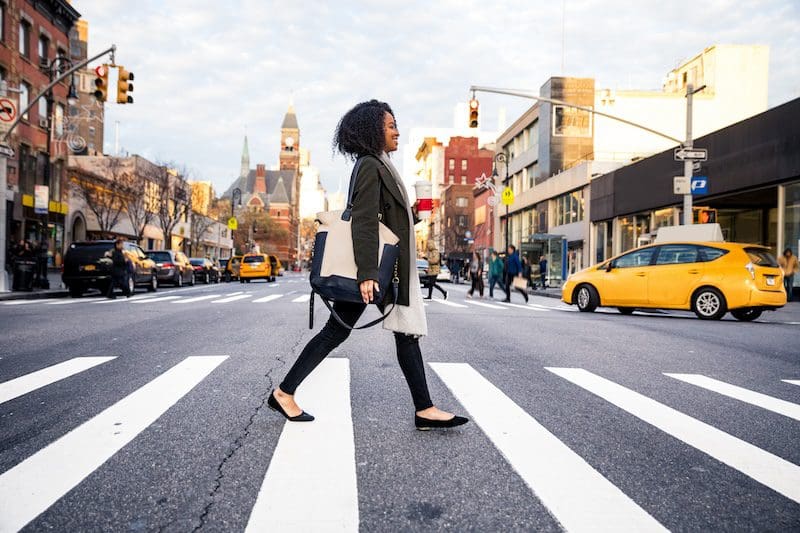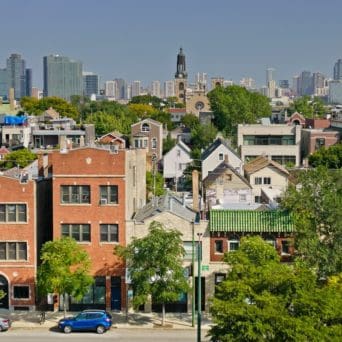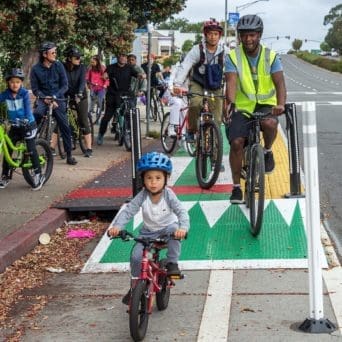Understanding How Complete Streets and Vision Zero Work to Build Safer, Healthier Cities
By Heidi Simon
When it comes to street design, the status quo isn’t working. The historic rates of pedestrian fatalities, disproportionately impacting people of color, older adults, and low-income communities, is just one indicator of this. And this danger, along with inaccessible conditions for walking, biking, and other forms of active transportation, contribute to the over half of American adults who don’t meet the recommended guidelines for physical activity.

Learn how Complete Streets and Vision Zero are complementary approaches.
But this is no secret to communities wrestling with improving how people move through and engage with their public spaces. The mystery for those looking to champion something better is, what’s the alternative? We need a paradigm shift that puts communities and people at the heart of transportation policies, practices, and processes.
For us at Smart Growth America, CityHealth’s partner for Complete Streets, Complete Streets policies have long been a key strategy for achieving that shift. Complete Streets is an approach to planning, designing, building, operating, and maintaining streets that enable safe access for all people who need to use them, including pedestrians, bicyclists, motorists, and transit riders of all ages and abilities. It aspires to create spaces where people can be healthy, be engaged, and reach their full potential by offering safe and accessible active transportation options, like walking and biking. It challenges the status quo and creates a new vision for how transportation meets a community’s needs.

Complete Streets is not the only way to create change, however. Many communities have made improvements through Vision Zero efforts. Vision Zero is a strategy that aims to eliminate traffic fatalities and severe injuries while improving access to safe and accessible transportation. For 10 years, cities have made proclamations and action plans to chip away at rising traffic fatalities that are too often accepted as inevitable when they are entirely preventable.
A community may wonder which answer is the right one, but that suggests a false competition between Complete Streets and Vision Zero when, in fact, they are complementary and can support one another to meet their goals for safer streets and healthier transportation options. (The National Complete Streets Coalition went so far as to endorse Vision Zero in 2017.) Whether Complete Streets or Vision Zero, we should applaud cities that are willing to find ways to provide transportation to support a community’s health, safety, and accessibility.
Complete Streets and Vision Zero efforts can have a powerful impact when simultaneously adopted and implemented. To a community, they demonstrate that leadership and staff are committed to changing transportation to support all modes and the health and safety of all residents. These complementary approaches achieve a shared vision and lead to achieving their stated goals with resources, systems, and implementation being reinforced throughout a city’s organizational structure.
Milwaukee, Wisconsin, adopted a Vision Zero Action Plan in 2022 which called for zero fatalities by 2037 by placing an emphasis on leadership, cross-agency collaboration, community engagement, equity, and data. This combined with its already in-progress 2018 Complete Streets policy creates not only a clear goal that can be measured against but a recommitment to how the city will create a safer and more accessible future for all community members. You can learn more about Milwaukee’s efforts in CityHealth’s case study in our Complete Streets interactive guide.
Whether implemented together or separately, neither can see success without action. The most impactful policies will embrace the vision and principles at the heart of both Complete Streets and Vision Zero to find the future that’s right for them. We should meet those willing to consider changing programs, policies, and systems with the resources they need to see them through, regardless of what we call them. The truth is that both Complete Streets and Vision Zero are needed to reverse the crisis on our roadways.
Heidi Simon is director of Thriving Communities at Smart Growth America.




